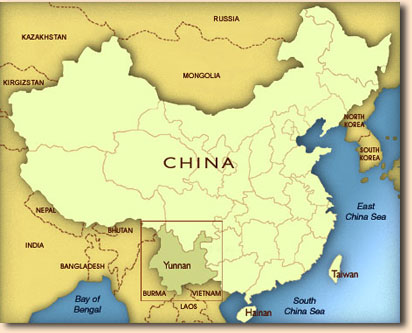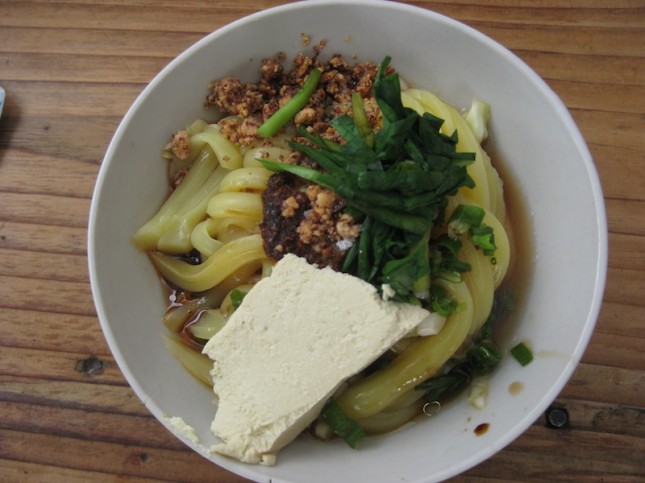About Yunnan
February 15th, 2012

Yunnan is the other China. It’s the one you don’t hear about in news reports, the one you don’t see on tours. Cookbook authors Naomi Duguid and Jeffrey Alford called it part of the China “beyond the Great Wall,” where the culture of the country’s Han majority gives way to the traditions and histories of China’s fifty-five minority groups, like the regions of Xinjiang, Inner Mongolia, and Tibet. But Yunnan is also so much more.
Yunnan is the most diverse region in China culturally, biologically, and meteorologically. Stretching from the southern edge of the Tibetan plateau in the north down to Laos and Vietnam in the south, Yunnan has huge alpine meadows and enormous swaths of tropical rain forest in an area so small you could drive from one extreme to the other in just two days. The great rivers of Asia, the Lancang (or Mekong), the Jinsha (or Yangzi), the Pearl River, the Red River, and the Salween, all flow through Yunnan, as do tributaries of the Irrawaddy, all carving deep valleys and trenches into the mountainous region. The province’s remote mountains and fields have given gardeners everything from ornamental bamboos to rhododendrons; mushrooms of every variety, from truffles to matsutake, grow wild here and are foraged by locals and shipped out to markets around the world; and dozens of the world’s biologists descend on Yunnan every year to study the region’s thousands of still mysterious plant, animal, and insect species.

The southern edge of the Tibetan Plateau, in northern Yunnan
Twenty-four of China’s minority groups call Yunnan home, from the Tibetans in the north to the Bai, who have had a thriving rice-based economy in the province’s central region for thousands of years; the Dai, an offshoot of the Tai people of Thailand and Laos; the Miao, or Hmong, who populate the area closest to the Vietnamese border (and who have a long and tragic history in the mountains of that country as well); the Jingpo, along the Burmese border to the west (also known as the Kachin within Burma, a group in the midst of an ongoing conflict with the Myanmar government that has caused a flood of refugees into that part of the province); and dozens of others, all of whom maintain their own unique cultures, religions, foodways, and traditional ways of dressing.

Women in a small village in Xishuangbanna, near the southern border with Laos
Yunnan is also China’s Wild West. For centuries retreating armies (and persecuted ethnic groups) have climbed up into Yunnan’s mountainous country, and for centuries conquering armies have been happy to leave them there. The region may have been the first part of China to be inhabited by homo sapiens, but the armies of China’s many emperors were unable to conquer the area until Genghis Khan’s troops arrived, and even then it continued to be a refuge for dissidents, criminals, and those who had fallen out of favor. And like the American West, Yunnan is known as a laid-back place, the region with the best weather, the most comfortable lifestyle, and the best vacation destinations.
Most importantly (for me, anyway), Yunnan is a region of delicious foods. The area’s biodiversity and the many cultures thriving in this tiny bit of the world have come together to create a wide variety of different food traditions and thousands of delicious dishes. In addition to the amazing array of mushrooms, the region is famous for its hams, which rival those of Italy, its pickles, which are particularly popular in the province’s central regions, it’s many kinds of flowers, which are eaten in soups and stir-fries, its use of potatoes, and its love of cheap nhl jerseys free shipping spiciness and Sichuan peppercorns. Additionally, every minority group has its own specialty dishes, from the Tibetans’ yak hot pot to the Dai people’s fish grilled in banana leaves. The province offers an endless array of things to eat, and my primary purpose in coming here is to eat, and learn to cook, as many of them as I possibly can.

A lunch of cold mung bean noodles in Xizhou
Map: Kangyunfriends.org; Photos: Georgia Freedman (3)



